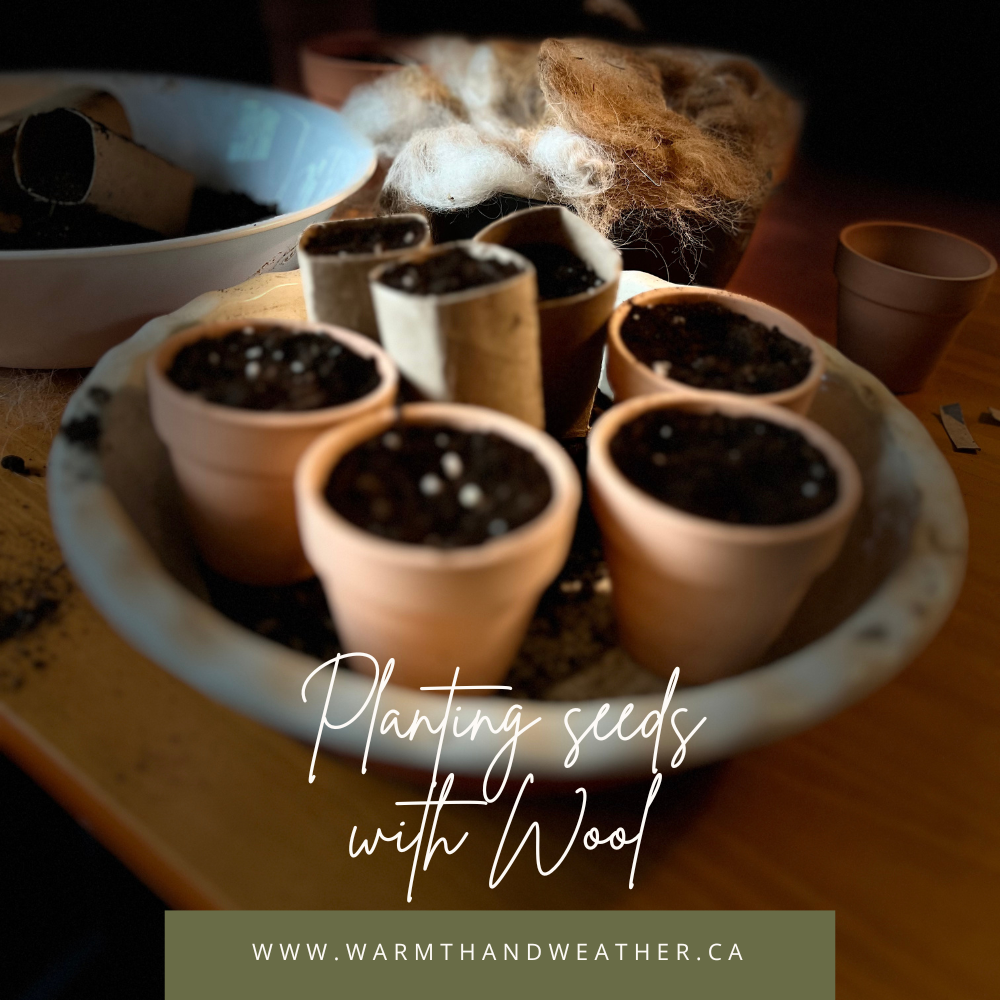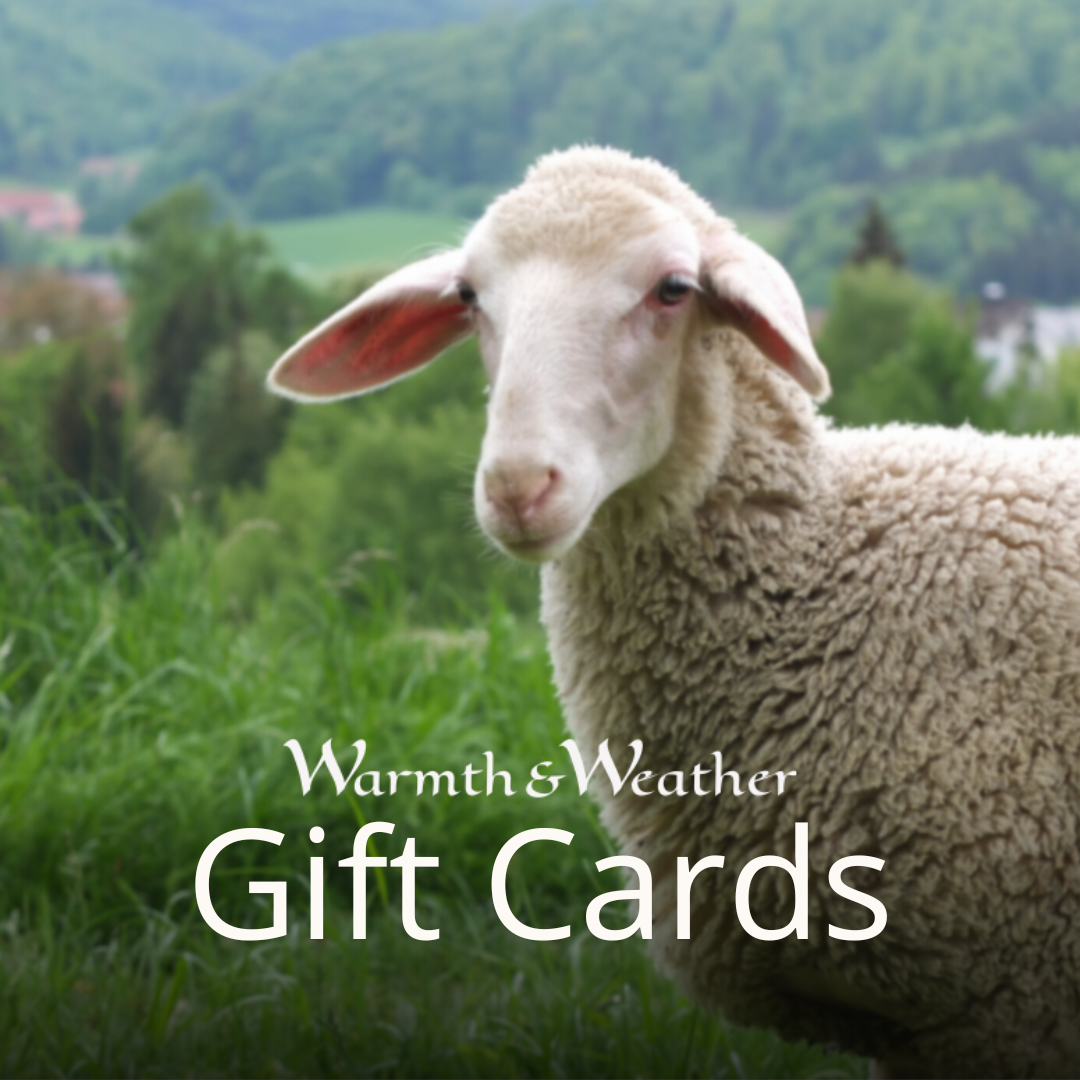
Faire germer des graines est un cadeau que l'on s'offre au printemps, lorsque les pluies d'avril commencent à arroser la terre brune et froide et que la promesse des fleurs de mai semble bien lointaine. Il existe de nombreuses façons de faire germer des graines, mais l'une de mes préférées est d'utiliser de la laine brute.
La laine brute est la laine que le mouton a retirée de sa ferme avant d'être nettoyée et filée. Lorsque l'on s'approvisionne en laine brute, il faut tenir compte de l'environnement dans lequel vit le mouton, car la laine brute sera remplie de débris, de matières végétales ou de pesticides utilisés dans l'environnement de l'animal. J'ai un ami qui élève des moutons sur Blind Line à Burlington, en Ontario. Il y a quelques années, je suis allé dans sa ferme pendant la saison de la tonte et j'ai récupéré des boîtes de laine brute qui n'allaient pas être utilisées. Sa ferme est biologique et ses moutons vivent principalement à l'extérieur dans un environnement sain et naturel.

L'agriculteur Brett Rogers à la ferme Blind Line, Burlington, juillet 2022
J'ai été inspirée à l'origine par le livre d'Irmgard Kutsch et Brigitte Walden « Spring and Summer Nature Activities for Waldorf Kindergarteners », dans lequel les enfants doivent nettoyer la laine brute dans de grands seaux avec des pistons, après quoi l'eau riche en minéraux est versée dans les parterres de fleurs comme engrais. La laine brute est rincée, étalée et laissée sécher sur un grand drap propre, puis, par un après-midi ensoleillé, elle est paresseusement ramassée pour éliminer tous les débris persistants. Une petite quantité suffit et j'ai eu beaucoup de laine brute pendant plusieurs saisons grâce à cette première collecte. Conservez la laine brute propre dans un sac en plastique fermé ou un sac en plastique pour empêcher les souris et les insectes de faire leur nid.

Images : Les moutons ont été tondus, la laine brute avant le nettoyage et la cueillette de la laine brute après avoir été lavée et les enfants transforment le fumier de mouton en engrais.
Une fois que vous avez obtenu votre laine brute, il est très simple de l'utiliser comme germe de graines.

De la laine brute pour faire germer les graines et du fumier de mouton pour faire un « thé » fertilisant.
Fournitures
Plateau à graines ou pots (fabriquez les vôtres à partir de rouleaux de papier toilette en carton - voir notre bobine Instagram !)
Sol organique
Graines
Laine brute
Eau filtrée

Instructions
Prenez un pot et remplissez le fond avec environ un pouce de laine brute.
Ensuite, étalez la terre par-dessus.
Plantez vos graines à environ 2,5 cm de profondeur. Tapotez fermement pour couvrir.
Arrosez abondamment.
Placer dans un endroit ensoleillé près d'une fenêtre.
Attendez que les semis germent !

L'avantage d'utiliser la laine comme starter est qu'elle aide à nourrir la plante avec de riches minéraux organiques, réduit la quantité de sol que vous devez utiliser et est entièrement compostable, elle peut donc être transplantée avec la plante dans votre jardin le jour même !
Nous espérons que vous serez inspiré à vous connecter à la laine d’une manière merveilleuse ce printemps.
Bonne plantation !
Article de blog de Kate Heming Panchal



